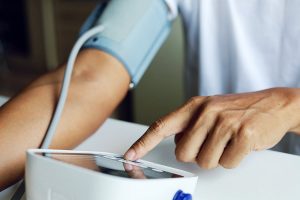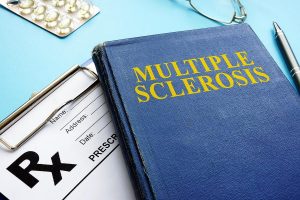Many Americans are not getting recommended cancer screenings, and a new study hints at one way to push the needle: paid sick leave from work.
Researchers found that in areas of the United States that passed mandates on paid sick leave, cancer screening rates inched up in the years afterward. Breast cancer screening rose by roughly 3%, while colon cancer screening increased by 6% to 8%.
When it comes to Americans’ access to health care, the focus is often on health insurance — whether people have it, and what it covers.
But people can face other kinds of barriers, said lead researcher Kevin Callison, an assistant professor at Tulane University’s School of Public Health and Tropical Medicine in New Orleans.
Taking time off from work, and losing pay, is seen as one obstacle. And, Callison said, it’s likely a bigger issue for low-income Americans, who are both more likely to be in jobs that lack paid time off and can least afford to lose a day’s wages.
What’s more, Callison said, those barriers may loom larger in people’s decisions around cancer screening — which is done when you are feeling fine.
That kind of preventive care, Callison said, “could be the first thing to go” when people have other concerns, like paying the bills, on top of mind.
As it stands, roughly 25% of the U.S. workforce lacks paid sick leave, according to federal figures.
The issue has, however, been getting more attention in recent years: A number of U.S. states, counties and cities have passed mandates requiring employers to provide paid sick days. But it has not been clear whether that paid time off makes a difference in cancer screening rates.
The new study, published March 1 in New England Journal of Medicine, suggests that it does.
Callison’s team looked at data on 2 million Americans who had job-based health insurance between 2012 and 2019. All were in the age range where mammography screening for breast cancer and colon cancer screening are recommended.
The study group was spread across 300 metropolitan statistical areas. During the study period, 61 of those areas were affected by a mandate on paid sick leave.
At the outset, 16% of workers eligible for colon screening had gotten it in the past year, and about 27% had been screened in the past two years. In areas where sick-leave mandates were passed, though, those screening rates rose by 6% to 8%.
Mammography screening rates were higher to start: Close to half of eligible women had received one in the past year, and almost two-thirds had been screened in the past two years. There was still a small shift in areas that passed mandates, the study found: On average, mammography screening rose by 3%.
“Those changes seem relatively modest,” Callison acknowledged.
But he also pointed to the context: Many workers in the areas that passed mandates would have already had paid sick leave. It’s likely that any effect on cancer screening decisions would be concentrated among the people who newly gained paid sick days.
The researchers estimate that if the results were scaled to focus only on those workers, colon cancer screening rates would show a 21% to 29% increase, while mammography screening rates would go up by 9% to 12%.
It’s also possible, Callison said, that those Americans with the lowest cancer screening rates — people of color and low-income workers — could benefit the most from paid sick days.
The findings “highlight the potential role of state and local policies mandating paid sick leave as a way to improve receipt of cancer screening in the U.S.,” said Robin Yabroff, scientific vice president of health services research at the American Cancer Society.
She added that when workers lack paid sick days, that could also be a barrier to getting any follow-up tests after an abnormal screening result — or even cancer treatment.
Sick leave is only one issue, however, according to Yabroff, who was not involved in the study. People may not get cancer screening because they lack a primary care provider, live a long distance from a screening facility or don’t have reliable transportation, for example.
On the positive side, Yabroff said, “there are many ongoing efforts to address barriers to cancer screening at the local, state and federal levels.”
She noted that the Affordable Care Act (known as Obamacare) took on some of the cost barriers to screening. It eliminated patient “cost-sharing” for routine preventive services, including cancer screening, for people with health insurance.
Although there is momentum behind sick-day mandates, they are also controversial, Callison noted: Eighteen states have passed “preemption” laws barring local governments from mandating sick leave.
More information
The American Cancer Society has an overview of recommended cancer screenings.
SOURCES: Kevin Callison, PhD, assistant professor, health policy and management, Tulane University School of Public Health and Tropical Medicine, New Orleans; Robin Yabroff, PhD, MBA, scientific vice president, health services research, American Cancer Society, Atlanta; New England Journal of Medicine, March 2, 2023
Source: HealthDay
Copyright © 2025 HealthDay. All rights reserved.

















